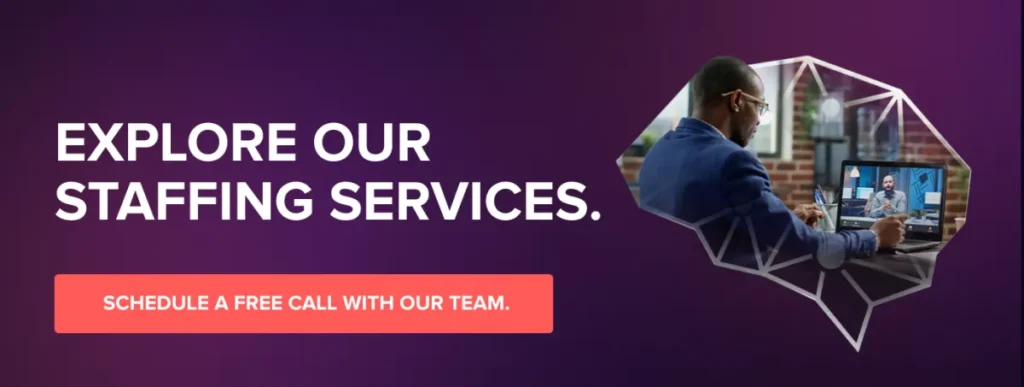Introduction

In today’s competitive job market, clarity is king. For job seekers and employers alike, understanding the intricacies of an administrative assistant’s job description is not just about filling a position—it’s about crafting a future. For the eager job seeker, a well-defined job description is your first glimpse into your potential new world; it tells you not only what will be expected of you but also how you can grow and what you can aspire to achieve. For the discerning employer, it’s about setting the stage perfectly to attract the right kind of talent—a person who doesn’t just fulfill the role’s requirements but elevates the entire team.
If your goal is to secure the best job description template available, designed to serve as a robust foundation for crafting your own hiring specifications, look no further. Click the link below to download our complimentary Administrative Assistant Job Description template. This essential resource embodies the fundamental principles and top practices of C9Staff’s renowned hiring methodology, ensuring you attract and hire the most qualified candidates efficiently and effectively
Administrative Assistant Job description template

Consider the example of a mid-sized firm that revised its administrative support roles around strategic communication and organizational management skills. The result? A 30% increase in operational efficiency and a noticeable improvement in job satisfaction among staff, as roles were clearer and employees felt more aligned with their core competencies.
This article speaks directly to both of you—the job seeker and the employer. By delving into what makes an administrative assistant job description a cornerstone of career and organizational success, we’ll explore how both sides of the employment equation can optimize their expectations and outcomes. From detailing the essential skills that set the foundation for a successful career to outlining the strategic structuring of a job description that draws in top-tier talent, our journey will be thorough.
Let this introduction serve as a beacon, guiding both potential employees and employers towards a deeper understanding of what makes a job description more than just words on a page, but a blueprint for mutual success and satisfaction. Join us as we unravel the layers of effective job descriptions that cater specifically to your needs, ensuring that every paragraph you read adds value to your quest for career excellence or the perfect candidate.
Understanding the Role of an Administrative

Welcome to the dynamic world of the administrative assistant—a role that is often seen as the backbone of any office, crucial for ensuring the smooth operation of day-to-day activities within an organization. In every sector, from bustling corporate offices to serene non-profits, administrative assistants provide the foundational support that organizations need to succeed.
A Day in the Life: Real-World Tasks of an Administrative Assistant
The Role Defined
An administrative assistant does much more than answer phones and manage schedules. They are the central hub of the office, the go-to person who facilitates all forms of communication and ensures that information is disseminated efficiently across all levels of the company. At its core, the role involves managing correspondence, scheduling appointments, organizing meetings, maintaining files, and often, serving as the first point of contact for visitors and clients.
Core Duties

- Communication Management: Handling calls, emails, and postal mail, redirecting inquiries to the appropriate departments, ensuring no messages are overlooked.
- Schedule Coordination: Managing calendars for staff, arranging meetings, and coordinating events, often juggling multiple priorities to accommodate everyone’s needs.
- Document Handling: Creating, editing, and organizing documents and presentations, which requires a meticulous eye for detail and a high level of proficiency in office software.
- Meeting and Event Planning: From booking venues to setting up conference calls, they ensure all logistical aspects are flawlessly planned and executed.
Essential Skills and Attributes
Success in this role requires a diverse set of skills and personal attributes:
- Organizational Prowess: The ability to manage multiple tasks and projects efficiently without overlooking any details.
- Effective Communication: Both written and verbal skills are paramount, as this role acts as a communication bridge within the organization.
- Technological Fluency: Proficiency in a variety of software, including word processing, spreadsheets, databases, and presentation software, is essential.
- Proactive Problem-Solving: Anticipating needs and issues before they arise and addressing them effectively.
For example, consider a scenario where an administrative assistant notices a scheduling conflict that could cause a major project deadline to be missed. By proactively arranging a series of brief check-ins rather than a lengthy meeting, the assistant ensures that all team members are updated and on track without sacrificing valuable working time.
The Role's Impact

This role is not just a job; it’s a career that interweaves itself into the very fabric of an organization’s culture. Administrative assistants are often seen as the heart of a team, providing the steady rhythm that keeps all parts of the organization moving in sync. Their work ensures that everyone else can perform their duties more effectively, ultimately contributing to the organization’s overall success.
As you embark on this career path or seek to hire for this role, understand that you are looking at a position that shapes the efficiency and atmosphere of your workplace. Whether you are stepping into this world for the first time or looking to fill this key position, know that the role of an administrative assistant is indispensable and deeply impactful.
Mastering the Role: Essential Strategies for Thriving as an Administrative Assistant
For Job Seekers – How to Interpret Job Descriptions

Welcome, aspiring administrative professionals! Understanding job descriptions is your first crucial step towards securing a position that not only meets your current skills but also supports your career ambitions. A job description is more than a list; it’s a map that guides you through the expectations and requirements of your potential employer and illuminates the path to your future growth.
Decoding the Job Description
Key Responsibilities:
Every job description provides a list of duties. For example, if the description states, “responsible for scheduling and coordinating meetings,” this indicates a need for meticulous organizational skills and the ability to manage time effectively. When you encounter a phrase like “liaise with department heads,” it’s clear that the role requires excellent interpersonal and communication skills. Understanding these responsibilities helps you gauge the daily tasks you’ll handle.
Necessary Qualifications and Desired Skills:
Qualifications might include specific educational degrees or certifications, while desired skills often highlight attributes like ‘detail-oriented’ or ‘strong problem-solving abilities.’ These not only suggest what the employer values but also hint at the office culture and the nature of the workload.
Understanding Job Levels and Career Progression
Job listings vary from entry-level to senior positions. Entry-level job descriptions often focus on learning opportunities and supervision, indicating room for growth. In contrast, descriptions for more senior roles might emphasize leadership or management skills, showing how you can progress to higher responsibilities.
Aligning Skills with Requirements
Identifying gaps between your current abilities and the job’s requirements is essential. If a job description calls for advanced proficiency in specific software, and you are familiar but not proficient, this identifies a clear area for development. Consider enrolling in online courses or seeking volunteer opportunities to enhance these skills.
Practical Tips for Personal Development
- Leverage Online Resources: Many platforms offer courses in business communication, software applications, and other essential skills at little to no cost.
- Volunteer: Small non-profits or local businesses often need volunteer administrative help, providing a great opportunity to practice new skills in a real-world setting.
The Empowered Application
Understanding a job description allows you to tailor your resume and cover letter to highlight the experiences and skills that align precisely with the role’s requirements. This tailored approach shows employers that you are not only qualified but genuinely interested in the role.
If you’re ready to supercharge your career and land your dream job, C9Staff is here to guide you on your journey. Click the link below to submit your resume to our talent acquisition department. If your qualifications align with our client’s requirements, we will reach out to discuss potential opportunities that match your profile. Don’t miss the chance to connect with leading employers and elevate your career—submit your resume today and let us help you find the perfect fit.

For Employers – Crafting an Effective Job
As an HR consultant with years of experience, I understand that the cornerstone of any successful hiring process is a well-crafted job description. It’s not just a list; it’s the first handshake between your company and potential candidates. Let’s delve into how to make this introduction count.
Importance of Clarity and Completeness
A clear and complete job description serves two critical purposes: it prevents misunderstandings and attracts exactly the right candidates. This document should leave no room for ambiguity about what the role entails and what will be expected of the candidate.
Essential Components of a Job Description
Role Summary: Provide a succinct yet comprehensive overview that sets the stage for the details to follow. This should encapsulate the essence of the role in one or two sentences, giving a snapshot of what the job entails and its importance to the organization.
Key Responsibilities: List specific duties in a clear and structured manner. This helps candidates understand their day-to-day tasks and assess whether they feel capable and enthusiastic about handling them. For example, rather than simply stating “responsible for office management,” specify that the job will require “scheduling appointments, organizing files, and managing communication between departments.”
Required Qualifications and Skills: Clearly state educational requirements, skills, and experience. Precision here helps ensure that you don’t inadvertently exclude potential candidates who could be a perfect fit. For instance, if advanced Excel skills are necessary, specify this rather than just asking for “computer skills.”
Desirable Traits and Skills: Highlighting preferred qualities can help in finding a candidate who meets the basic criteria and brings additional value to your team. This might include traits like “proactive,” “innovative problem-solver,” or “strong interpersonal skills.”
Communicating Job Expectations and Qualifications
It’s vital to articulate what you expect from candidates clearly. Avoid vague phrases like “might involve some additional duties” and instead, be specific about what those duties could entail. This transparency helps manage expectations on both sides and improves the quality of your applicant pool.
Incorporating Company Culture and Benefits
Making your job description appealing is key to attracting top talent. Include elements of your company culture and highlight benefits that differentiate your workplace from others. Whether it’s flexible working hours, health insurance, or career development opportunities, these aspects can be highly attractive to prospective employees.
Legal Considerations and Non-Discriminatory Language
Always use language that is inclusive and non-discriminatory. This not only ensures compliance with employment laws but also broadens your talent pool to include diverse applicants. Avoid jargon and terms that could be interpreted as biased towards any particular group.
If your goal is to secure the best job description template available, designed to serve as a robust foundation for crafting your own hiring specifications, look no further. Click the link below to download our complimentary Administrative Assistant Job Description template. This essential resource embodies the fundamental principles and top practices of C9Staff’s renowned hiring methodology, ensuring you attract and hire the most qualified candidates efficiently and effectively
Administrative Assistant Job description template

Industry-Specific Administrative Assistant Roles

Welcome to a detailed exploration of the administrative assistant role across various industries. While certain skills such as organizational prowess and effective communication are universal to administrative professionals, the nuances of each sector demand a closer look to fully appreciate the diversity and specialization of these roles.
Healthcare Administrative Assistants
In the healthcare sector, administrative assistants play a crucial role in managing patient records and supporting medical staff. Precision and a high degree of confidentiality are paramount. Tasks often include scheduling appointments, coding medical records for billing, and maintaining clear and accurate patient documentation. These assistants must navigate a complex environment where their actions directly affect patient care and privacy.
Legal Administrative Assistants
In the legal realm, the administrative assistant becomes an integral part of the legal process. Their duties extend to preparing court documents, managing legal correspondence, and ensuring that all case materials are accurately filed and accessible. A thorough understanding of legal terminology and the stamina to handle high-pressure deadlines are essential. Their meticulous nature directly impacts the efficiency and success of legal proceedings.
Educational Administrative Assistants
Within educational institutions, administrative assistants ensure the smooth operation of academic environments. From primary schools to universities, they handle communications for academic departments, manage student records, and support faculty with administrative tasks. Their role is pivotal in organizing events, maintaining academic compliance records, and facilitating the communication between students, parents, and teaching staff.
Corporate Administrative Assistants
In the corporate world, administrative assistants help streamline business operations. They manage schedules, arrange meetings, and may even assist in project management. Their ability to handle business correspondence and effectively coordinate across departments makes them a linchpin in any corporate setting. Often, they are the unseen force that ensures that business initiatives are executed smoothly.
Sector-Specific Skills and Their Importance
For each industry, certain skills are particularly valuable:
Healthcare: Confidentiality, attention to detail, and knowledge of medical software.
- Legal: Understanding of legal procedures, strong document management skills, and high stress tolerance.
- Education: Strong interpersonal skills, proficiency with educational software, and adaptability to different academic levels.
- Corporate: Strong project management skills, proficiency in business software, and effective communication across a wide range of corporate structures.
The Future of Administrative Roles: Navigating Technological Advancements
As we step further into the digital age, the landscape of administrative work is undergoing significant transformation. Advances in technology are not just reshaping the tools we use but are redefining the very nature of administrative tasks. This evolution presents a dual challenge and opportunity for both current and aspiring administrative professionals as well as the organizations that employ them.
Technological Transformation in Administrative Tasks
Technological innovations such as artificial intelligence (AI), machine learning, and automated systems are revolutionizing traditional administrative functions. AI-driven software is now capable of managing complex scheduling tasks, automating standard communication responses, and even handling certain aspects of customer service and client interaction. These tools streamline processes, reduce manual workload, and increase efficiency, allowing administrative professionals to focus on more strategic tasks.
Essential Skills for the Technologically Advanced Workplace
To thrive in this new era, administrative assistants will need to develop a robust set of skills:
Technical Proficiency: Proficiency in software like CRM platforms, cloud services, and advanced office suite features is becoming indispensable. For instance, knowledge of CRM software can enable assistants to manage and analyze customer interactions more effectively, providing valuable insights to their teams.
- Data Management Skills: As organizations increasingly rely on data-driven decision-making, administrative professionals must be adept at collecting, organizing, and analyzing data. Understanding data privacy and security protocols is also crucial as the handling of sensitive information becomes a more prevalent part of the job.
- Adaptability and Continuous Learning: The rapid pace of technological change requires a mindset geared towards continuous learning and adaptation. Administrative professionals must be agile, ready to update their skills regularly, and open to adopting new technologies.
Real-World Applications
Consider the case of an administrative assistant at a tech startup who utilized a specific AI scheduling tool to optimize team meetings across multiple time zones. This tool not only improved efficiency but also freed up valuable time for the assistant to focus on higher-level project management and team coordination efforts.
Preparing for the Future
For job seekers and employers alike, staying ahead of these changes is vital. Employers should consider integrating training programs focused on these new technologies into their development plans, ensuring their staff remains on the cutting edge. Job seekers should pursue opportunities for self-education in tech skills relevant to administrative work, such as online courses in data analytics or certifications in new software platforms.
By anticipating these shifts and proactively adapting, both employers and administrative professionals can ensure they are well-positioned to capitalize on the opportunities presented by technological advancements. The future of administrative roles promises not only challenges but also the potential for greater impact and strategic involvement in the success of their organizations.
Real-World Examples and Case Studies: Learning from Success

In the world of administrative support, the difference between a good job fit and a great one can often be traced back to the clarity and precision of the job description. Here, we explore how specific, well-aligned job descriptions have led to successful careers for administrative assistants and effective hiring practices by HR professionals.
Interviews with Administrative Assistants Across Industries
Healthcare: Anna, an administrative assistant at a large hospital, shared how a detailed job description helped her understand the critical nature of her role in patient data management. She emphasized how the clear outline of responsibilities prepared her for the high stakes of her job, which involves handling sensitive patient records.
Legal: John, who works at a bustling law firm, recounted the early challenges of meeting the demands of his position. He credits his success to a job description that accurately detailed the need for meticulous document management and familiarity with legal terminology, which helped him focus his training effectively.
Education: Sarah, an assistant in a university department, highlighted how her job description mentioned the need for strong interpersonal skills and the ability to support both students and faculty. This clarity allowed her to leverage her strengths and significantly improve department communication.
Corporate: Mike, who transitioned from a smaller company to a major corporation, explained how his comprehensive job description highlighted the importance of tech proficiency in handling business correspondence and managing schedules. This preparation was key to his seamless integration into a more dynamic corporate environment.
Case Studies from HR Professionals
Innovative Hiring Practices: A tech company’s HR manager described their use of a skills assessment tool to match administrative assistant candidates to the specific technological needs of their teams. This practice has not only streamlined their hiring process but has also led to higher long-term retention rates.
Technology in Recruitment: An HR professional in healthcare shared how integrating AI into their recruitment process helped identify candidates with specific competencies in healthcare administration, leading to quicker and more accurate placements.
The Impact of Effective Job Descriptions
These stories underline the crucial role that precise job descriptions play in the satisfaction and effectiveness of administrative assistants. For employers, these examples reveal the benefits of investing time in crafting detailed and realistic job expectations that not only attract the right candidates but also set them up for success.
If you’re looking to enhance your recruitment process and secure the perfect Administrative Assistant for your organization, C9Staff is here to help. We invite you to click the link below to schedule a free exploratory call with one of our dedicated account managers. During this call, we’ll carefully listen to your needs and provide endorsements for potential candidates at no cost, helping you evaluate the best talent available at competitive prices. Don’t miss this opportunity to optimize your hiring strategy—schedule your call today!

Conclusion: Empowering Your Professional Journey
As we wrap up this comprehensive guide to understanding and crafting administrative assistant job descriptions, let’s briefly revisit the essential insights we’ve shared. Each segment of this article has been designed not only to inform but also to empower job seekers and employers alike in navigating the dynamic landscape of administrative roles.
Key Takeaways
- Understanding the Role: We emphasized the critical skills and diverse duties of administrative assistants, demonstrating how these vary significantly across different sectors—from healthcare to corporate environments.
- For Job Seekers: We highlighted the importance of meticulously interpreting job descriptions to align your skills accurately with the right career opportunities, ensuring you target positions that best match your qualifications and career aspirations.
- For Employers: We stressed the critical importance of crafting clear, comprehensive job descriptions. These descriptions are not just listings but strategic tools to attract and retain the right talent, essential for organizational success.
- Industry-Specific Roles: We explored how the demands and required skills of administrative assistants differ by industry, underscoring the need to tailor job descriptions and candidate expectations to specific sector needs.
- The Future of Administrative Roles: We discussed how technological advancements are reshaping the skills and roles of administrative assistants, preparing you for the future demands of the workplace.
- Real-World Examples: Through testimonials and case studies, we illustrated successful job placements and career advancements, providing you with concrete examples of how well-aligned job descriptions and candidate profiles lead to professional success and satisfaction.
For job seekers, continue to refine your skills and adapt to the evolving demands of the industries you are interested in. The future is bright for those who stay proactive and ready to embrace new technologies and responsibilities.
For employers, remember that the strength of your workforce begins with the clarity and detail of your job descriptions. Maintaining up-to-date, precise job descriptions will help you attract the right candidates and keep your team ahead of the curve.
Now, I encourage you to use the insights and tips provided in this guide to enhance your hiring strategies or job search efforts. Whether you are drafting a job description or tailoring your resume, these guidelines are designed to assist you in achieving greater success.
Be sure to download additional resources, such as resume templates for job seekers or job description templates for employers, available on our website. These tools are tailored to help you implement the strategies discussed today.
Together, let’s take your professional interactions to the next level. Apply the best practices shared in this article and watch as your career or your company transforms, ready to meet the challenges and opportunities of tomorrow.




